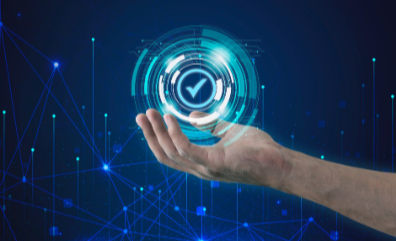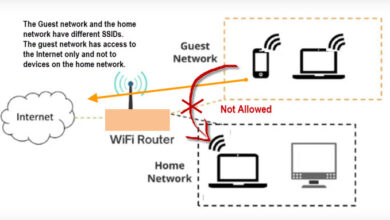Convenience and Security In FinTech with Biometric User Authentication

Over the projection period until 2028, the number of fintech users is predicted to indicate changes. The number of digital payment users is expected to increase gradually and reach 4.81 billion in 2028. Thus, the instantaneous growing fintech industry faces the threats of identity thefts and other economic crimes that may lead to loss of finances
The fintech industry now employs biometric user authentication to overcome the perils and the dangers of identity forgery. As authentication is considered to be a crucial aspect of financial relations, particularly in the online world. However, the digital economy has become increasingly critical, consequently, ensuring security and convenience is also essential. Biometric user authentication provides a definitive solution by compelling individual biological features such as fingerprints, facial characteristics, and iris prints.
This article will delve into the diverse applications of biometric technology and its advantages.
See Also: Harnessing the Power of Supplementary Services for Your Business with Agencycf
Key Features of the Blog
- Biometric use authentication is a creative solution for secure and convenient authentication in Fintech industries.
- How It verifies through distinctive physical features for secure financial transactions?
- How is biometric technology used in fintech ?
- How has it been mitigating fraud risks and enhancing security measures?
- The way it enables seamless transactions quickly and efficiently.
- The privacy and security measures in fintech.
What is Authentication Biometric?
Biometrics are the biological features that distinguish one from others. They only have physical features such as fingerprints, faces, eyes, and voices. Biometric data is particular and is different from each individual which makes it efficient to verify the identities of the user. Individuals’ biometric data is securely stored in systems and used to verify consumers’ access to the system and make transactions within the compliances in FinTech. However, several types of authentication biometric can be used for verification purposes in the FinTech industry. Here are a few categories of biometric user authentication:
- Iris and Retina Scanning
- Fingerprint Recognition
- Voice Recognition
- Facial Recognition
- Behavioral Biometrics
Biometric Authentication Security In FinTech
Fintech apps are becoming popular globally due to their user convenience and security. Nevertheless, with increased usage, they are always at risk of security infringements and data heists. Fintech apps must ensure that users’ information and transactions are secure to prevent such incidents. However, biometric authentication security has become a groundbreaker in the fintech industry, especially in digital transactions, insurance, and banking. The process disseminated by fintech has organized new strategies to make online transactions optimal. However biometrics plays a significant role in ensuring an improved security system.
Biometric User Authentication Solutions
Biometric user authentication solutions have evolved entirely, making transactions seamless. Compared to conventional verification techniques, such as passwords and pins, biometric user authentication is more secure and convenient for users. It only uses distinctive physical features, which makes it much harder to replicate and manipulate. With biometric user authentication, the technology can overcome privacy concerns and employ regulatory compliance.
Applications of Biometric Screening Authentication
Implementing biometric user authentication and encryption in fintech apps is a method of accomplishing user verification. Biometric user authentication ensures that the user is verified before allowing them access and onboarding. Here are some of the pivotal applications of biometric user authentication in fintech:
- The biometric payment system is a creative initiative that allows users to make transactions without credit cards. In China, people do not hold cash and cards, so they pay with biometrics.
- Online banking needs rigorous authentication actions to ensure user security. Biometrics offers a more straightforward solution for users to access their online accounts remotely by replacing the traditional passcodes or PINs. Thus, with biometric user authentication, the fraudster can be mitigated.
- Biometrics has encouraged smooth financial transactions by providing quick and easy verification methods. This has simplified the process of improving the user experience and reducing the risk of uncertainties or losses regarding transactions.
Advantages of Biometric Authentication Security
Biometric authentication security involves using special physiological traits, to identify and grant access to authorized users, such as fingerprints, facial recognition, and iris scans. Biometric authentication offers various benefits over traditional approaches, which are as follows:
- Faster and Accurate Authentication
- Robust Security system
- Ultimate Convenience
- Enhanced User Experience
- Absolute Control Over Access
- Scalability and Flexibility
- Reduced Dependency on Tokens and Passwords
- Non Repudiation
Final Statement
Biometric user authentication stands as a pivotal solution in the convergence of convenience and security within the dynamic fintech industry. As the industry continues its rapid development, the imperative to safeguard against identity theft and financial crimes endangers considerably. Biometric authentication occurs as evidence of trust that leverages distinctive physical features like fingerprints, facial features, and iris patterns to strengthen the verification process. Its implementation indicates a new era that is revolutionizing banking and financial services by mitigating fraud risks and streamlining transactions.
By prioritizing privacy and security while embracing biometric technology, fintech pioneers developed not only seamless user experiences but also robust protection against evolving threats in the digital realm.



